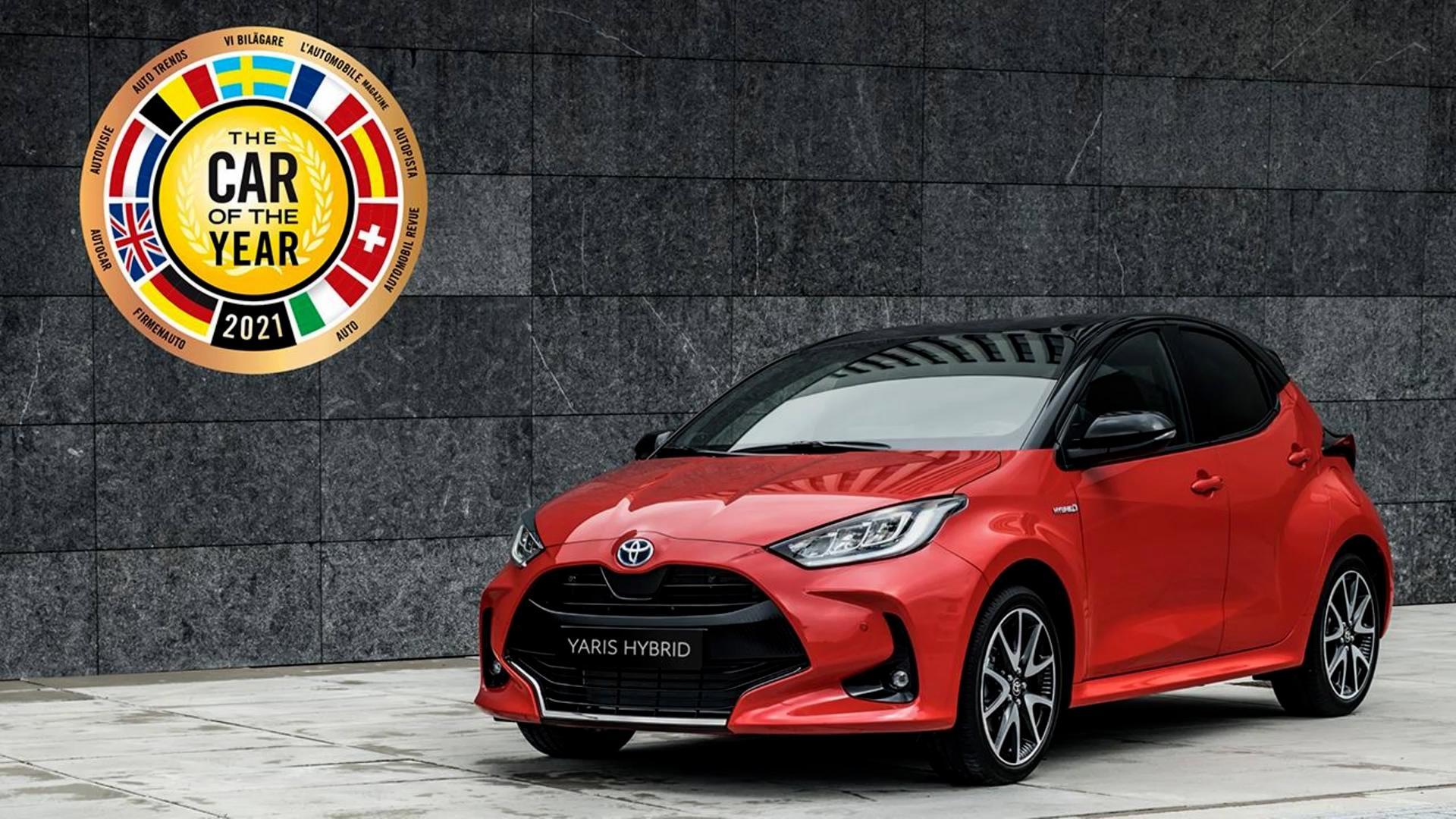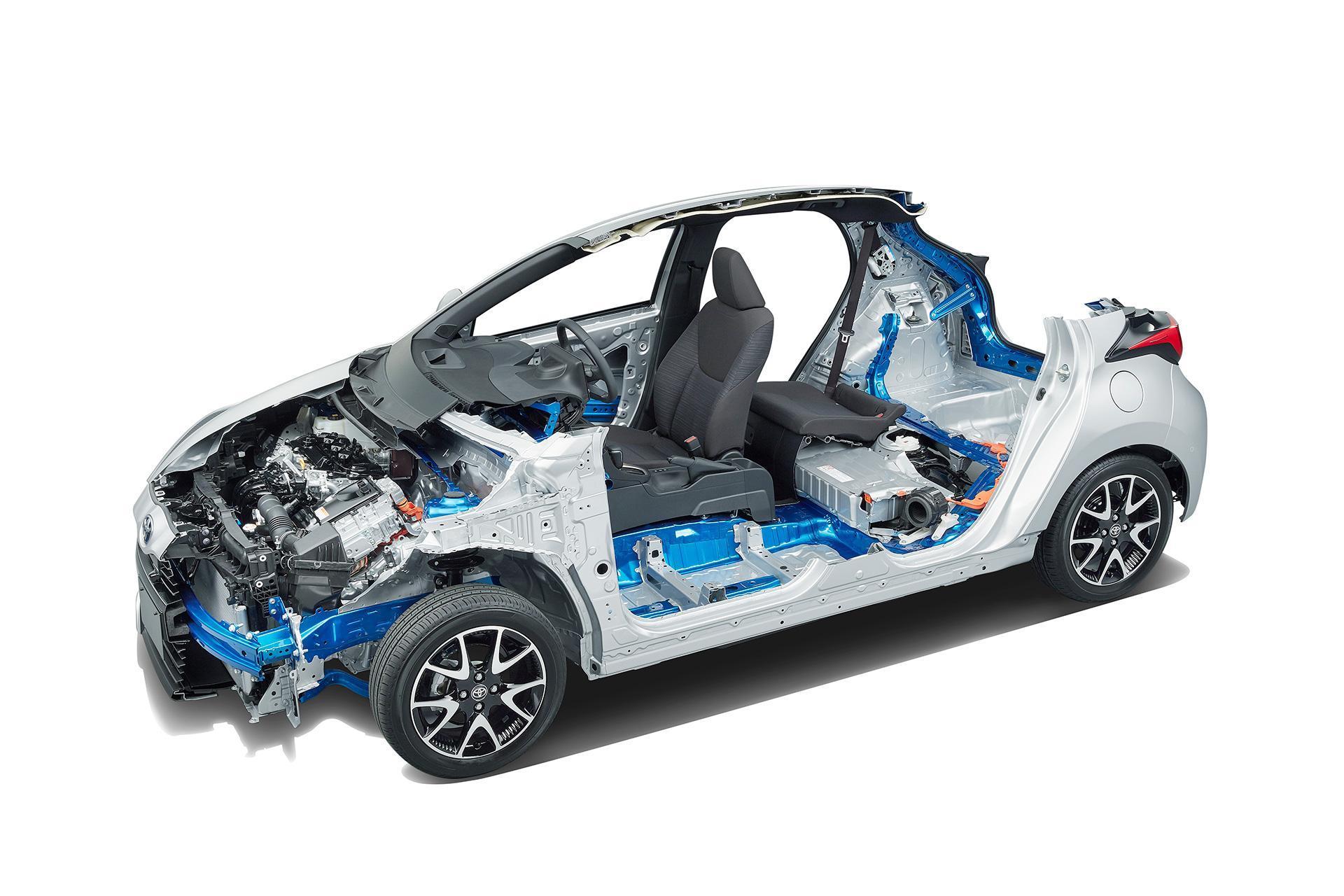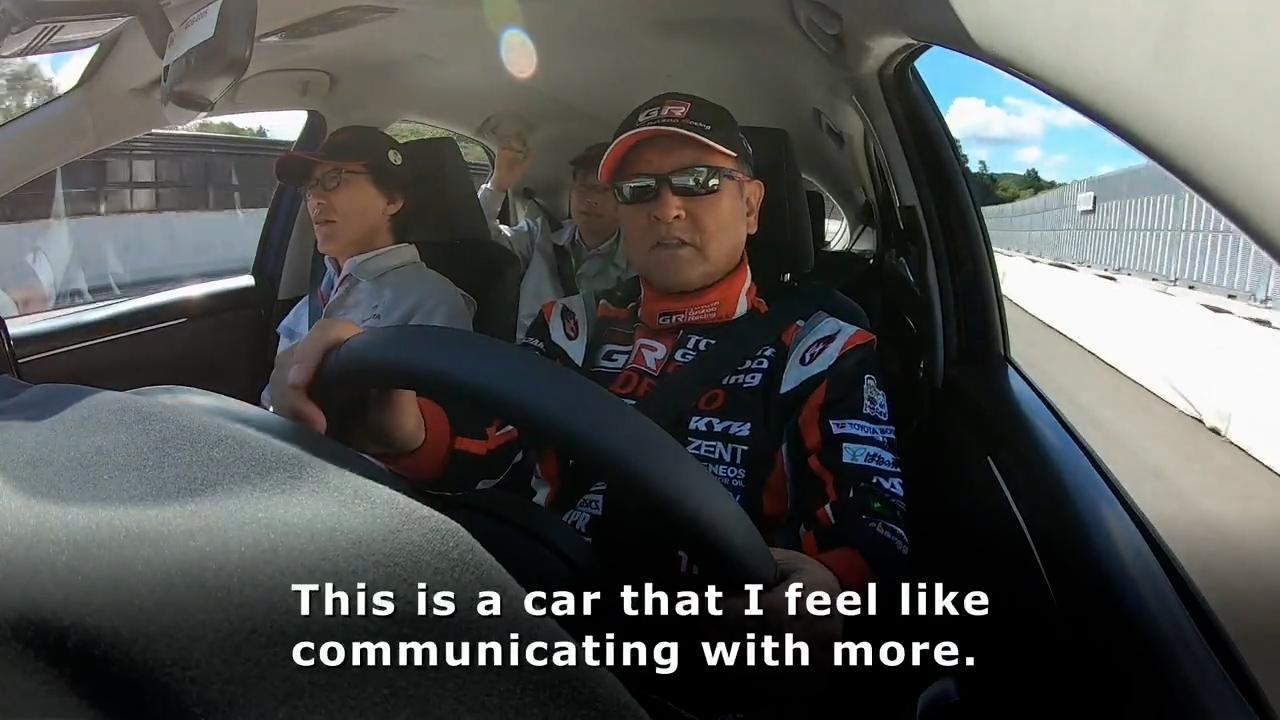
How did the Yaris win Car of the Year 2021 in Europe? Toyota Times spoke with Chief Engineer Yasunori Suezawa, who led the development of the Yaris, to find out.

The Yaris has been named Car of the Year 2021 in Europe! The news arrived in March 2021.
With a long history and tradition dating back to 1964, the Car of the Year is one of the most prestigious automotive awards in Europe. It honors the year’s best car, as voted by 59 journalists from 22 European countries.

Given that the award is selected among cars sold in Europe, it comes as no surprise that cars from German, French, Italian and other regional manufacturers are strongly represented. In its nearly 60-year history, the top accolade has been given to Japanese cars only five times, including this year’s award.
This year, the Yaris was the only non-European car among the seven shortlisted models. And yet, when the final Car of the Year 2021 results came in, the veteran journalists selected the Yaris. It was a feat Toyota had not managed since the Prius, sixteen years earlier, in 2005.
How did the Yaris win the award? What aspects had caught the eye of the jury? Toyota Times reporter Kyonosuke Morita was determined to find out.
First, Morita spoke with GR Company GRZ Chief Engineer Yasunori Suezawa, who had served as Chief Engineer for the Yaris. As the person who led the car’s development, what were Suezawa’s thoughts on winning the award?
Yaris was built on Europe’s roads
It was early morning in Japan when the Car of the Year 2021 in Europe award was announced. Suezawa recalls that he ‘nearly jumped out of [his] skin’ when word came from Europe. At a time when everyone would normally be asleep, on this special day there was great excitement in the air, and the emails began to fly back and forth.
Morita:
Not only was the Yaris among the seven finalists, but it came out on top.
Suezawa:
I nearly jumped out of my skin. It was the middle of the night, or early morning rather, when they contacted us from Europe. I couldn’t believe it, I was so surprised. Then the emails flew back and forth. Everyone was very excited saying ‘We did it, we did it!’
Morita:
And people got in touch to congratulate you as well?
Suezawa:
That’s right, we were congratulating each other from all sides. Winning the award was a team effort, so it wasn’t about any one individual. We thanked all of our local team members (at Toyota Motor Europe (TME)).
Although Suezawa looks back at that moment with utmost modesty, his heart must have been filled with inexpressible joy and a great sense of accomplishment. After all, behind this victory lay the extraordinary efforts of Suezawa and his development team.
One of the challenges is the difficulty of gaining recognition in Europe. The Yaris is both a global model, available around the world, and one of Toyota’s core European lines. It is also positioned in the so-called ‘B-segment’ compact car market, a fiercely contested area featuring products that are the culmination of each manufacturer’s capabilities. There, the Yaris competes against such formidable rivals as Volkswagen’s Polo, Renault’s Clio (Lutecia in Japan), and Peugeot’s 208.
These European manufacturers have the benefit of knowing every aspect of their native region, from its values and attitudes to the way people live. Faced with such competition, Suezawa’s mission was to create a product that would be the beloved choice of European customers, while also satisfying the driving needs of domestic users in Japan.
Morita:
What is the significance of winning the Car of the Year 2021 in Europe, rather than in Japan?
Suezawa:
As in Japan, we worked closely with local partners to ensure that our cars satisfied European customers, and I’m very pleased to see that wish come true.
Suezawa and his team benefited greatly from the track record that Toyota had steadily built up in Europe, as well as the support of Toyota Motor Europe (TME) and local dealerships.
Morita:
Toyota was able to claim the top spot as a Japanese car manufacturer among many local European manufacturers. How do you feel about that?
Suezawa:
The Yaris has been produced in France since the first generation, and we incorporate the opinions of our local members, including the sales team, widely in our products. I was also posted to Europe for some time. Every aspect of the car was designed to suit the tastes of European customers – there was no compromise in that regard.
Morita:
And you feel that this was duly recognized?
Suezawa:
Yes, and for that I’m grateful. European roads and driving conditions are very demanding, so we built the car accordingly. At the same time, environmental performance is also a key factor now, and Toyota’s hybrids are among the world’s best. I think the jury recognized how well the Yaris balances those areas.
European roads vary greatly, from narrow cobblestone streets to autobahns without speed limits. Poor road surface conditions are also fairly common. European drivers travel long distances on such roads, at high speeds. As expressed through Toyota’s making ever-better cars concept (‘roads build people, and people build cars’), the Yaris was built on the roads of Europe.
So what was it about the Yaris that won over the European jury? Suezawa puts it down to the car’s ‘balance across the board’. Driving comfort was the main prerequisite in Europe, but we also incorporated a hybrid’s fuel efficiency and environmental performance. Added to this were safety, design, and an affordable price, which earned the Yaris recognition as a car balanced in all aspects.
Morita:
What particular aspects do you feel contributed to winning the award?
Suezawa:
More than any one particular aspect, I think it came down to the car’s strength across the board. I read comments by the journalists (who serve as the jury) for the Car of the Year 2021, and they noted the Yaris’ ‘excellent balance’.
The main consideration in Europe is how a car drives, but we also have to take fuel efficiency and environmental performance into account. Safety is also important. Europe has a very strict car safety assessment, the Euro NCAP. The Yaris became the first B-segment hatchback to earn the top 5-star ranking under the program’s revised evaluation standards.
Then there is the price, design, quality, and features – I think the car was recognized for being well balanced across all these various areas, at a high level.
Morizo (President Akio Toyoda) is also very well known in Europe – this, along with the efforts of everyone at TME and the ripple effects of the high-performance GR Yaris, certainly contributed greatly.
Morita:
Was that something you were aiming for from the development stage?
Suezawa:
Everyone on the development team was working towards high goals, while remaining conscious of future market trends. I’m grateful that we were able to launch the car as intended, without compromise or omission. I think that contributed to our success.
Morita:
You achieved what you set out to do.
Suezawa:
I honestly believe that everyone involved achieved these ambitious goals, without leaving anything out.
This across-the-board balance certainly does not mean that the Yaris was unexceptional in individual areas. Such a car could not hope to earn Europe’s highest accolade. Suezawa and his team had obsessed over every aspect of the vehicle without compromise, from the way it drives to environmental performance, price, design, and features. That is what led to the Yaris being crowned Car of the Year 2021 in Europe.
The agonizing decision over a one-year delay
Car development involves many trade-offs, as improving drivability affects environmental performance, or prioritizing safety increases weight. And yet, to produce a top-level vehicle, engineers must doggedly search for ways to skillfully balance these conflicting needs.
When asked how he managed this difficult task, Suezawa cited a key decision made by Akio during the development process – to delay the Yaris’ launch by one year.
Suezawa:
We delayed it by a year. I remember feeling extremely guilty in the beginning, which was very hard. We started with ambitious goals, and (to achieve these) the car would become too heavy, and too expensive. I began to wonder whether we could carry on like that.
At the time, the GA-B platform and TNGA unit that were planned for use in the Yaris was heavier and more expensive than required (Further reading: ‘Untold Story of One-Year Delayed Yaris Launch’).
However, delaying the launch of a car is no easy task. The impact would be global, from the operation of production plants in Japan and France to the management of dealers around the world. After weighing up all options, Akio decided to prioritize making ever-better cars and delayed the launch for one year.

This one-year extension, however, must have placed immense pressure on Suezawa and his development team. The decision was particularly significant for the long-running Yaris model, which would have waited some eight years for the revamp even if all had gone as planned.
But the team made the most of this extra year, making every effort to achieve the goals that had been set. These concerted efforts came to fruition, as the team succeeded in thoroughly reducing both weight and cost.
Morita:
I know from past interviews how serious a one-year launch delay is in the world of cars – did you feel that pressure?
Suezawa:
The team was hard at it, day in and day out, so there was a constant sense of pressure and excitement. But we were determined to make the most of the year we were given and worked hard towards that new line, which was both challenging and motivating for the team.
Morita:
And the Car of the Year award proves that the (one-year delay) decision was correct, doesn’t it?
Suezawa:
Yes, there’s no doubt about it.
Hierarchy: overturned
In 2019, Akio drove the Yaris development model at the Shimoyama test track. Images and footage from the day can be found in a Toyota Times report (‘Renewing the “Starting Point of Making Ever-Better Cars”—an Account of a Test Drive of the Shimoyama Development Model (Yaris)’).

With its one-year launch delay, the new Yaris managed to reach completion. Suezawa recalls how he felt when Akio took the car for a test drive: “Thankfully he approved of how it drove, and I was filled with gratitude for my team, who had made that possible.”
In footage from that day, Akio can be seen smiling during his entire time in the driver’s seat. He couldn’t help but praise the team’s great achievement, using words like ‘premium feel’ and ‘higher class’. “I’d like to try this on many different roads,” said Akio.
Morita:
You were riding in the back seat that day, weren’t you?
Suezawa:
Yes, I was.
Morita:
Were you nervous?
Suezawa:
Yes, but more than that I was eager to get the master driver “Morizo” behind the wheel. In the end, thankfully he approved of the product and how it drove, and I was filled with gratitude for my team, who had made that possible.
As you may have seen in the videos, from the moment we set off, Morizo and then-Vice President Yoshida were all smiles. Seeing them smiling the whole time made me realize anew that this really is a great car.
Stepping out from behind the wheel, Akio voiced his determination to ‘take on the hierarchy’. He was talking about the hierarchy of small, medium and large cars, in which size tends to be equated with luxury.
With the development of the new Yaris, Akio wanted to turn that image on its head by creating a small vehicle that people consider attractive and are proud to own. Let’s take a look back at his comments from that day:
Akio:
The pattern with most cars is that large cars are expensive and small cars are cheap. Yaris is a smaller car. If people think of it as affordable, that’s ok.
But we don’t want our customers to think of it as cheap. I wanted the driver to feel that what they are driving is cool and attractive. Our challenge was to achieve this feeling in an affordable way.
That is why the Yaris is equipped with the latest safety technology and the latest hybrid system. Normally, such technologies would first be introduced in large, luxury cars at the top of the hierarchy, such as the Crown, Toyota’s flagship sedan in Japan.
This time, however, “that hierarchy has been completely overturned,” says Suezawa proudly. In a car that will be driven by a great many people, incorporating the latest technology at an affordable price takes on special significance.
Morita:
What does the Yaris mean to Toyota?
Suezawa:
I believe there will always be a need for compact cars like this. They handle and drive well, and are affordably priced. On top of that, we were able to equip such a car with Toyota’s latest safety, fuel-efficiency, and environmental technologies. I think the decision to do that was truly wonderful. If we keep moving in this direction, Toyota’s compact cars will become ever more exciting.
The Yaris overcame a challenging one-year launch delay to brilliantly claim top honors at the Car of the Year 2021 in Europe. Just as the car was built on the demanding roads of Europe, the development team’s struggles through numerous adversities and hardships enabled it to exceed even the ambitious initial goals. Looking back on that time, Suezawa shared the following reflection.
Suezawa:
Honestly, it was hard, but I feel that those hardships got us where we are today. Everyone on the team, myself included, also grew through the experience, for which I am grateful.

